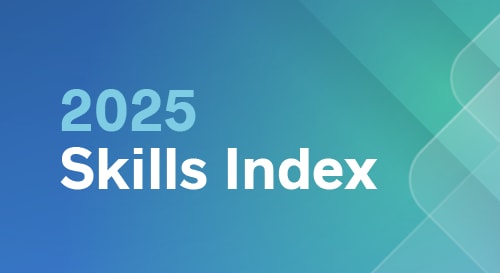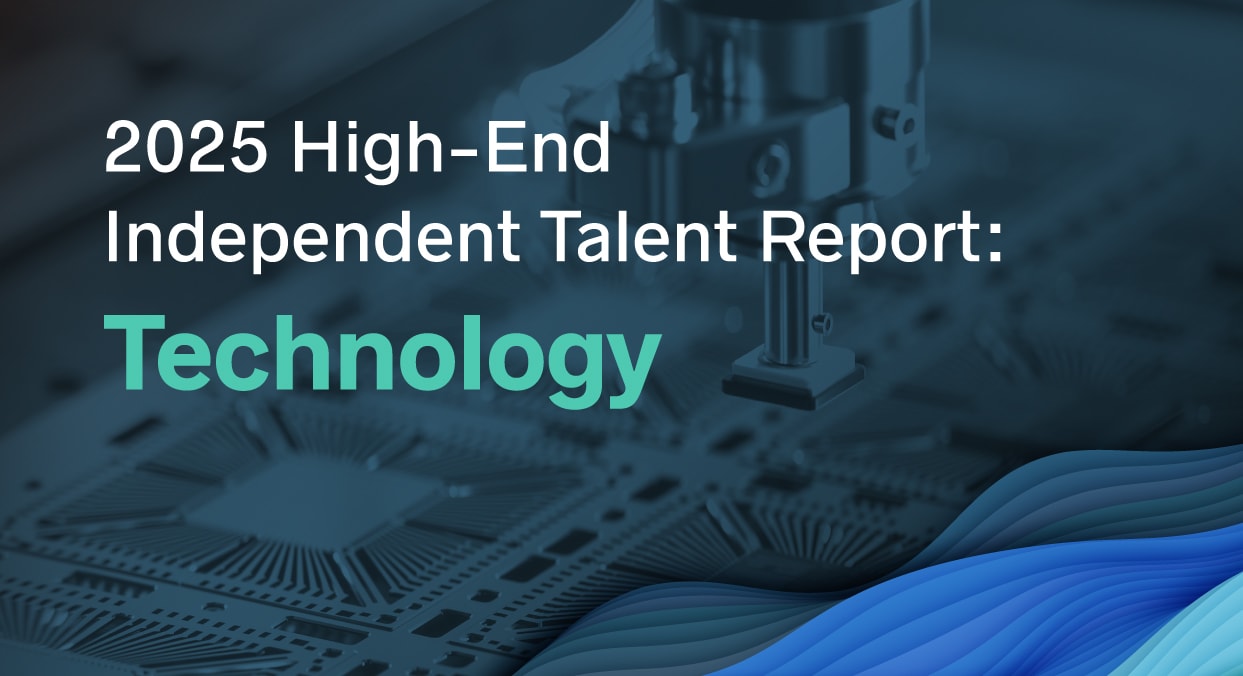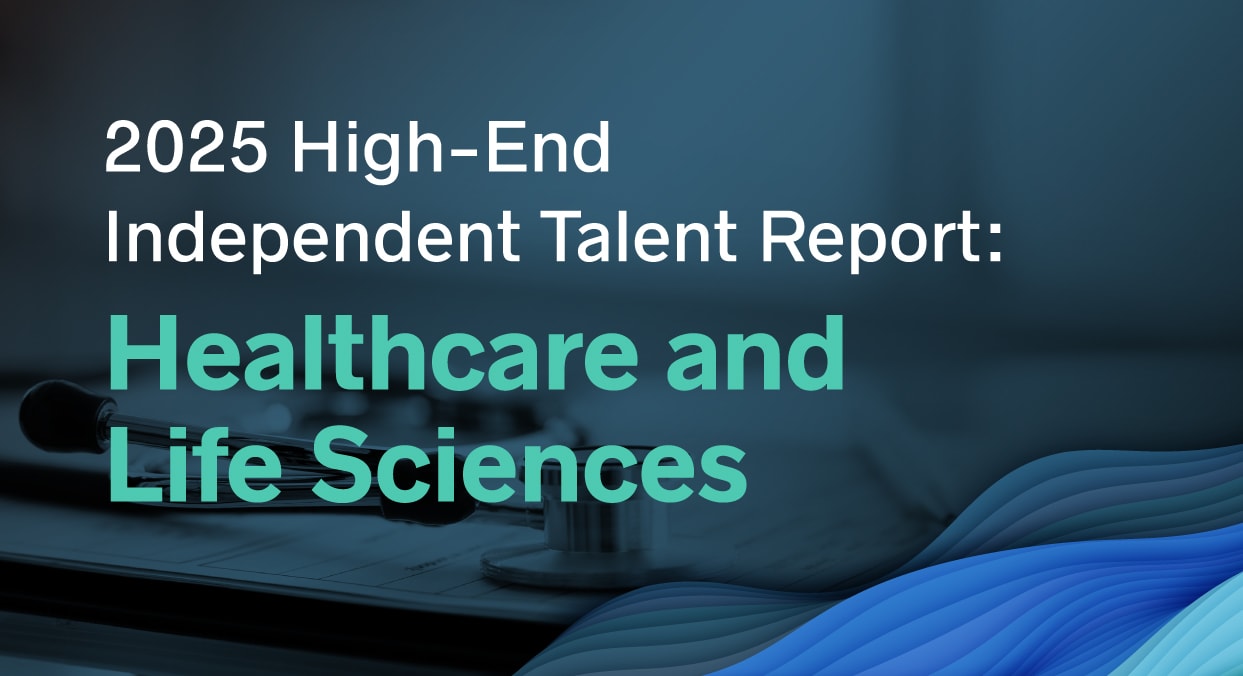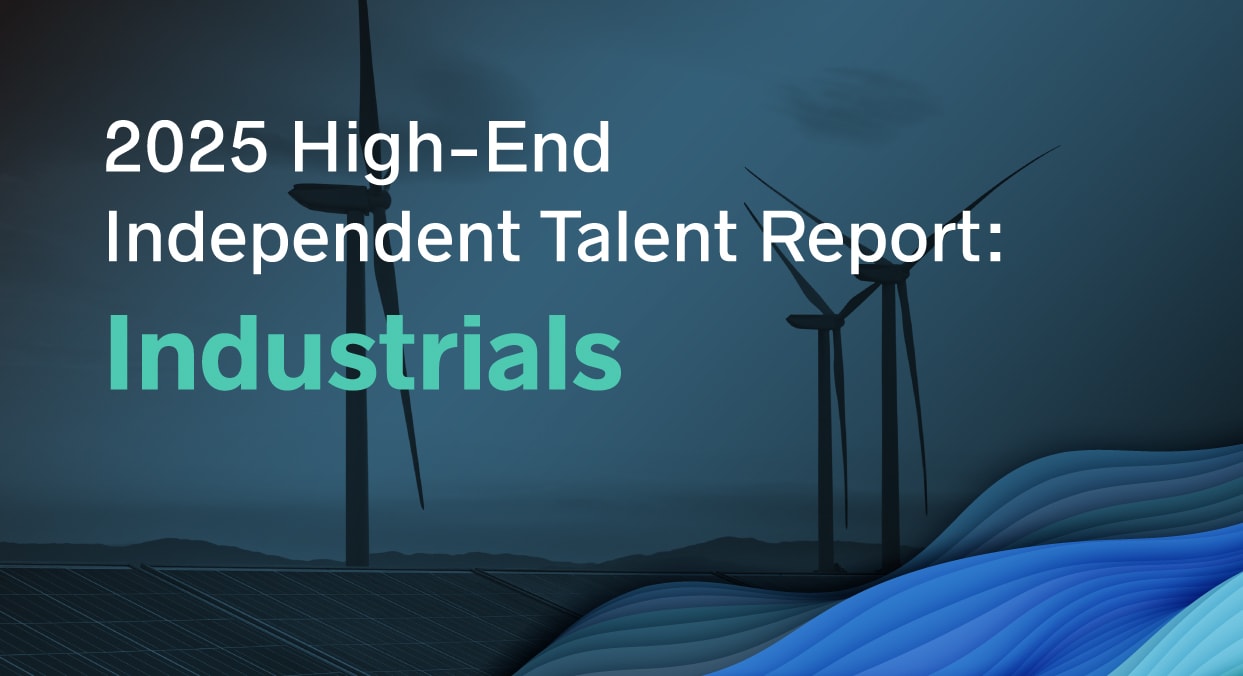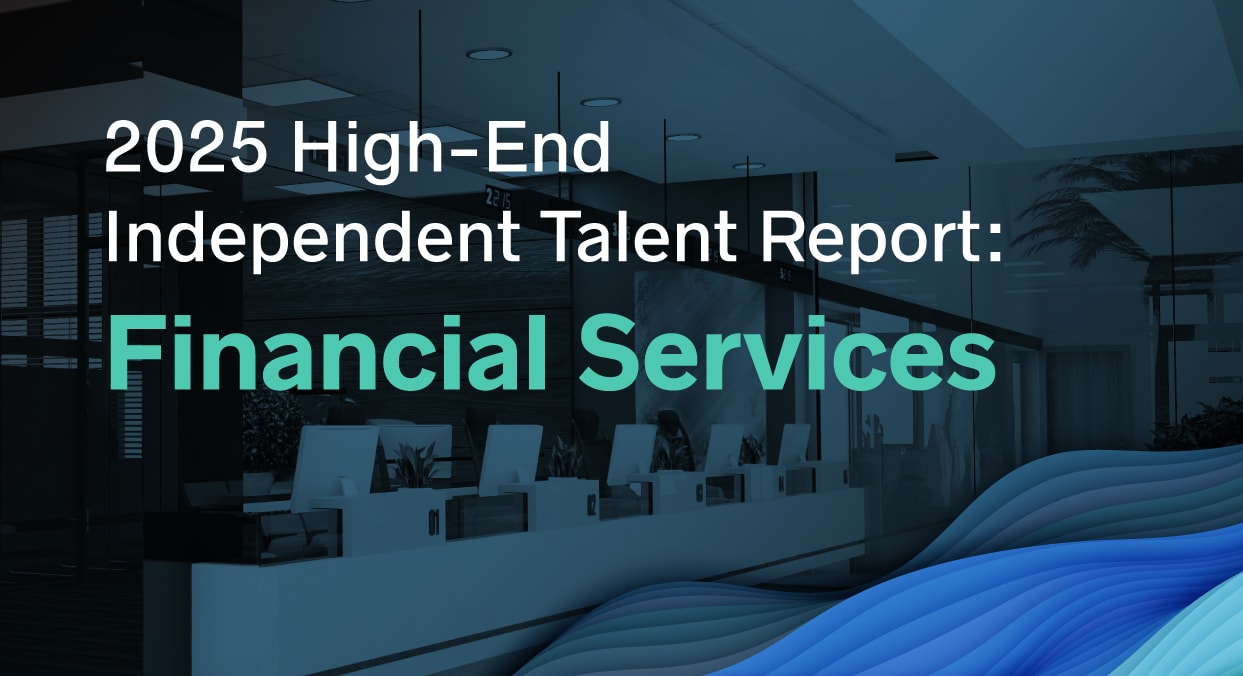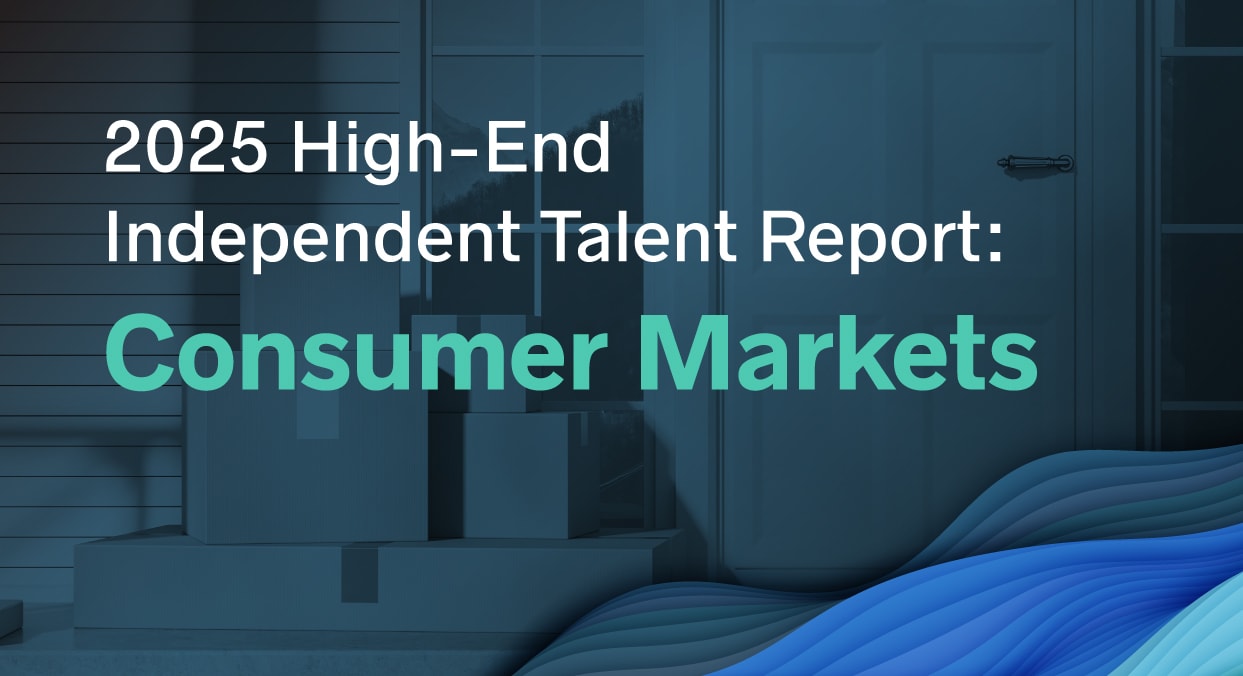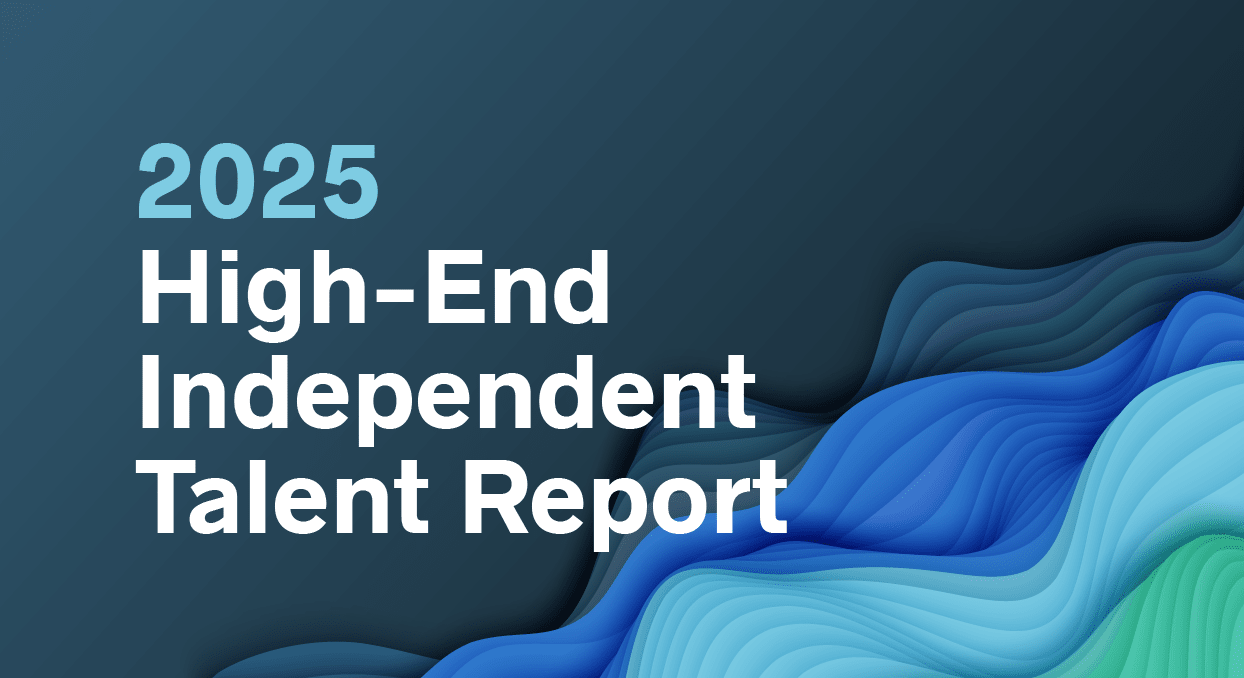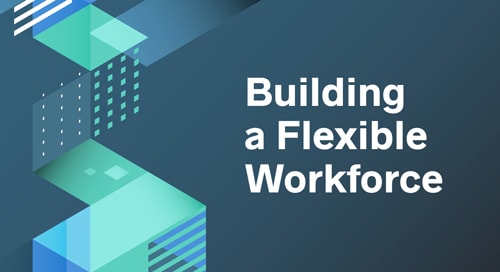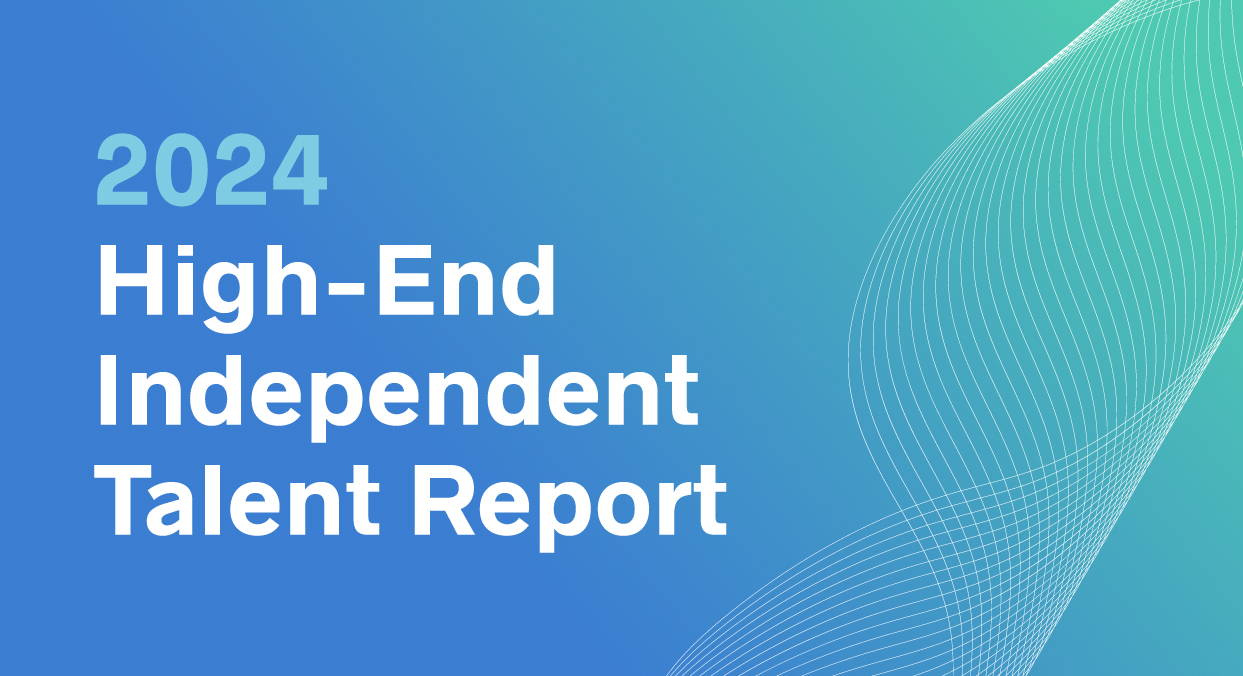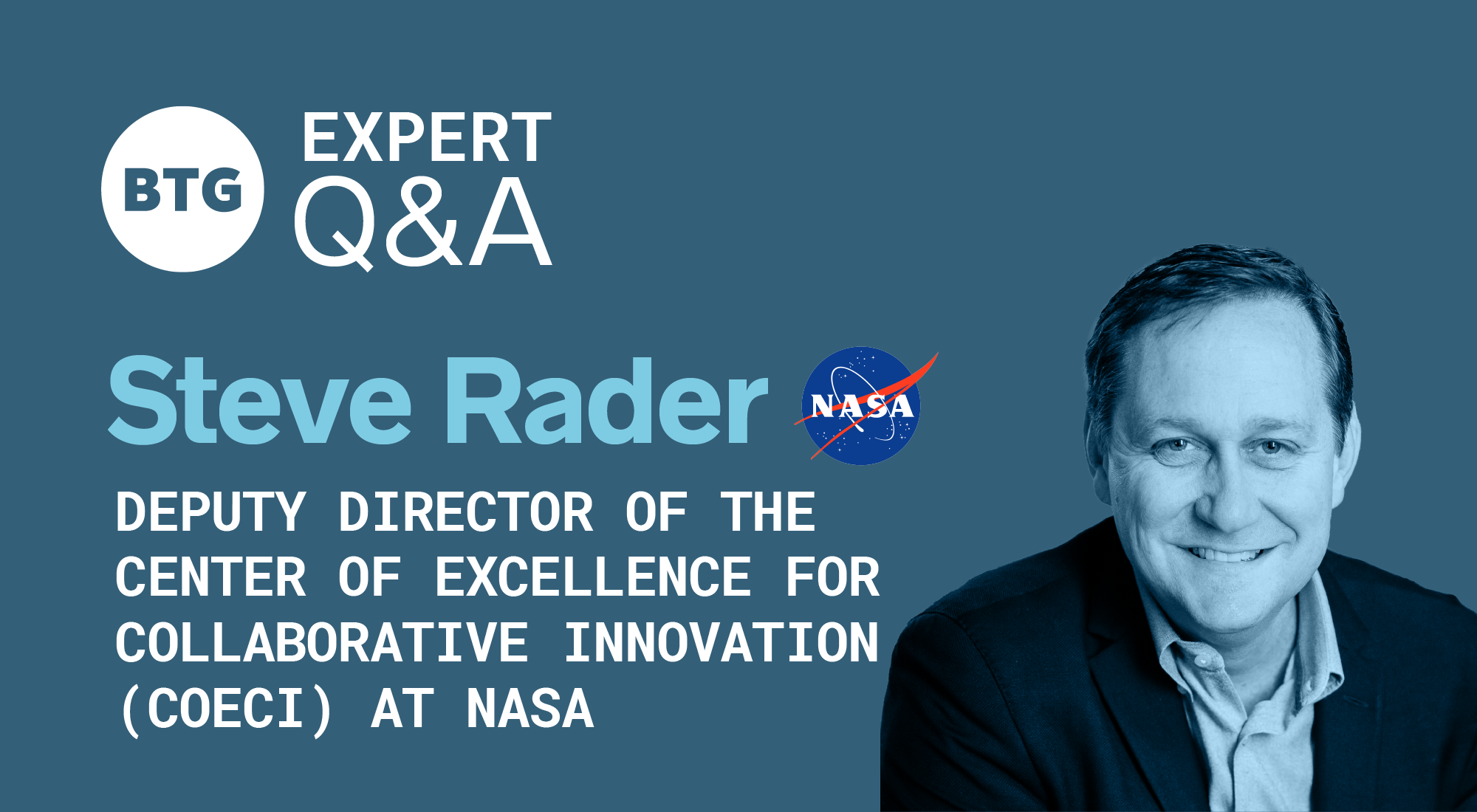
NASA’s Center of Excellence for Collaborative Innovation (CoECI) is breaking new ground in harnessing the power of open innovation to solve critical problems both within the agency and across the U.S. government. With more than 450 crowd-based challenges issued via the NASA Tournament Lab to date, CoECI has agencies tackle projects ranging from designing tools and technologies to disrupt the flow of opioids into the United States to developing manufacturing processes for the lunar surface.
As the Deputy Director of CoECI, Steve Rader facilitates and promotes the use of crowdsourcing and collaborative innovation platforms in support of such federal projects. He recently sat down with BTG’s Vice President of Enterprise and Corporate Development to discuss his work at CoECI, the benefits that the crowd-based model delivers to federal agencies, and recent news about the NASA Open Innovation Services 2 (NOIS2) contract—which expands the program to include a wide range of micro-tasking, freelance, and on-demand talent platforms, including Business Talent Group.
Listen to this episode of the BTG Insights on Demand podcast to hear Steve’s thoughts on why crowd-based and gig economy solutions are powerful tools for innovation, problem-solving, and engaging the public in the inspiring work performed at NASA. You can also read our lightly edited transcript of the chat below.
Adam Zellner:
Welcome to the podcast Steve. It's great to have you.
Steve Rader:
Thanks Adam, it's great to be on.
Adam Zellner:
To kick off, can you tell us a little bit about the origins of the Center of Excellence for Collaborative Innovation (CoECI), including the founding principles behind it, how it got off the ground, and how long it's been?
Steve Rader:
Yeah, it's actually kind of an interesting story. Back in 2009, Dr. Jeff Davis at NASA—who heads up the Human Health and Performance Directorate that kind of deals with all the astronaut health—he actually got a big budget cut, and as a result of that, all of their R&D work was really kind of in a crunch. So to figure out how to do that with fewer resources, Jeff went out on a mission to benchmark with other companies to see what other folks were doing in this new world that might be of help with his new, smaller budget.
He came across P&G and others that had been pioneering this area. Also I think he took a course with Karim Lakhani at Harvard Business School, and that kind of opened up this world of open innovation. So in 2010 he put together a pilot program with InnoCentive and yet2. Around that same time there was another manager at headquarters, Jason Crusan who started working with Harvard as well and also started some pilot work with Topcoder and Tongal. And it turned out that all of these pilots were really successful in tapping into the internal crowd at NASA through the InnoCentive@Work platform that they were piloting as well as external challenges and tech searches and then the top coder challenges as well.
About that time, the White House Office of Science and Technology Policy was looking at this phenomenon of open data, open source, open innovation, and they were really promoting the government's pivot to this new phenomenon that was going on. In looking around the government, they found that NASA had done some of this work and had some knowledge about it. So in 2011, they asked NASA if they would stand up a center of excellence around this idea of open innovation to not only promote it within NASA, but to actually help the rest of the federal government adopt it—to mentor other agencies and provide tools and ways for them to get smarter about it and to implement some of these methods. That’s really how it got started, and it's been a really interesting journey over the past nine years.
Adam Zellner:
Yeah, that is interesting. Given that the crowd-based challenge model was originally established to augment NASA's own R&D capabilities, it obviously scaled somewhat organically from there as multiple things came together. What do you see as the key benefits of the challenge model? What does it bring to the projects that you all take on?
Steve Rader:
Yeah. That's great. I'm glad you emphasized that because that was our first starting point was this idea of open innovation and prizes and challenges as the way to access communities. The big benefit is the diversity, right? When you've got a closed R&D shop, even if you have some of the best folks in the world...and we do, right? NASA has some just amazing scientists and engineers. I think it's easy to forget the importance of diversity in R&D and in innovation.
I would say that one of the big things that we've seen as we've been really looking at this and why it's successful and why it's so important is that the world has changed. We've always had technology changing our options for how we can get things done better, and those that impact our skills that we need in order to use those technologies. But the rate has changed. It has just continued to accelerate, and it's to the point now where we're at this collision point of growth of the population along with the wealth of countries bringing along a lot of education systems over the last 20 to 30 years, so that suddenly there are more educated people around than ever before. In fact there's a stat I use a lot that says that 90% of all scientists that have ever lived on planet Earth are alive today. That's huge, right?
And if you look at similar curves in PhDs or in numbers of patents, they're really these curves that are amazingly steep right now. We've gone from just four or five years ago, a few hundred thousand patent applications a year to, I think in 2017, it was three million a year. Same kind of phenomenon going on in PHDs. And the result of that is just a lot more technology, and a lot more technology coming quickly, and it's interplaying with each other. So for R&D, what that means is it's a lot harder to find those technologies that can give you an edge because you end up spending all your time either researching to try to find it and kind of chasing your tail, or you just go inward and pretend it's not there. In both cases, you're not finding the best starting points for going and solving your problems.
So this idea of bringing in diversity is a well-known piece of the innovation equation. But what we're seeing is, a lot of technologies and skills needed to solve our problems, needed to move us forward on a grand scale, are only outside of the agency or are largely outside of the agency. Because our whole agency is 60,000 people if you add up all of the Boeings, the Lockheeds, everyone on contract. So that's not all engineers, right? That's receptionists and travel folks and security guards. There's just not that many people working space, and when you look at that larger population, you get both the advantages of numbers as well as the diversity that that brings across multiple industries.
Adam Zellner:
It's super interesting. I love that stat about how 90% of all the scientists who have ever lived are alive today. It really does speak to just the power of the crowd and how if they're given opportunities and ways to help that they can. You mentioned the White House and their encouragement to create a center of excellence. What other agencies were quick to get on board with the concept?
Steve Rader:
After some legislation that kind of enabled people to use prizes and challenges came along, several agencies really popped up and were early adopters. I would say Department of Energy was very active early on, the Centers for Medicare and Medicaid Services, they were pretty big. We've seen work in USAID, in NIH. I would have to go back and think because I don't want to leave anybody out. There were several agencies that really got on board quickly. I think there were some in the military as well. And we actually formed a community practice that GSA now runs.
There's challenge.gov, which is the site where we post all challenges that the government puts out there and it's this running list of a lot of open innovation work going on around the world of government. And it's funny, we actually collaborate with folks. So for instance, we had an internal crowd that we built called NASA@work where we use our employees as a crowd. And we had a great meeting with CIA. They went and implemented something similar but now they've actually done some really creative things that we are now learning from them. So there's kind of this back and forth with the agencies on trying to learn from each other on how to best use this and we're still experimenting.
Adam Zellner:
Yeah. It's exciting to hear about the innovation being shared across agencies and that you're—for example, with the CIA—you're learning from what they've done and how they’ve built their own version and modified it to work for them, and you can all leverage it.
In 2015 CoECI launched the NASA Open Innovation Services contract (NOIS). What were the goals with NOIS, and how did it differ from how the program was administered previously? What was the shift that you were looking for?
Steve Rader:
Yeah, so in the early years we had a direct contract with InnoCentive and yet2, and then we had a contract with Harvard Business School, who then had kind of a subcontract with Topcoder and I think they also reached out to Tongal every once in a while. It's interesting working with Harvard because it's this older-than-the-country institution. We think our bureaucracies are bad—it turns out Harvard has some pretty amazing bureaucracy and a big overhead. So part of it was, we wanted to move out to a little bit more streamlined, inexpensive model where we could access these vendors easily. One of the things is that we were seeing lots of new communities come online, right? So we were seeing that there were lots of different crowd platforms that were coming out and offering similar services.
So when we went to our contracting folks, we basically tried to be creative and recognize that this was kind of a new era of doing business and that weren't going to just be a few of these, that they were going to change, and they were going to come online, and we were still in this experimentation phase. And challenges, originally everyone thought that was just good for ideation. And then it turned out, well oh, you can also get really amazing video work and, oh, you can get software and, oh, you can solve algorithm problems and data science problems. The breadth of things you could do with challenges and with open innovations was expanding and it wasn't like one vendor was optimal for everything.
In the contracts world at NASA—and I'm imagining that it’s this way a lot of places—it is like a nine to 12 month ordeal to put a contract in place. If we were going to do these single one-off contracts with everyone, that was going to be a huge amount of overhead. So we put our heads together and said, "Well, we're kind of still experimenting. Let's use this…" And I have to credit the procurement folks because they actually presented us with these options that, we have this lightweight way to bring in what we call a Multi-Vendor IDIQ contract which is Indefinite Deliverable, Indefinite Quantities, and bring a bunch of contractors on that all meet the requirements that you're basically looking for, and then you can issue task orders on to that contract and compete them.
And so you say, "Hey, I need to have a piece of software built." And you'd put what we call it an RFP—or now we call it an RFTP—but it's basically a request for a plan, right? Tell us how you would do this? how much it would cost? What your schedule is and why you're a good fit, right? Why should you do this? What are your qualifications?
On that first contract, we had 10 vendors, and obviously only a subset of those were going to bid on software contracts, and only a subset would bid on problem solving, and only a subset would bid on video. So it was kind of like they could self-select what they were specialists in and provide a plan for us, and then we would pick the best value for the government and that would become a fixed price task order. That enabled us to really see what the full spectrum of open source or open innovation communities could do, and it expanded our minds.
About the same time that we did that, we actually also noticed that we could use purchase cards, government purchase cards, which are basically credit cards that at the time had like a $3,000 limit. And we found a few crowd platforms where that was their price point for running challenges—it was a few hundred dollars up to two or $3,000. That mechanism's now up to a $10,000 limit, so we can actually do quite a bit using just a purchase card without a formal contract. That led to some experimentation in, well if we can get this for $50,000, and this software for $30,000, and this other problem solved for a lot more, what can we get over here? And we started doing graphics challenges, and small video challenges, and animation challenges. And then we even did some design challenges—some engineering design challenges—and found some fairly amazing stuff. And so that's become a complement and it opened our eyes to the freelance world, which overlapped in some of those platforms.
Adam Zellner:
You’re describing what I've seen from other organizations—enterprises especially—where they start to build out a portfolio of marketplaces that help them address a series of business areas or topics that require support or could be improved. They may start with one area but they go beyond that. It sounds like there was a learning that you all experienced and growth in the understanding of how this type of talent, how this type of model could support your work, and take it to the next level.
You mentioned the recognition that there was some overlap with freelancers. I think that speaks to NASA Open Innovation Services 2 (NOIS2), which expands the program to 19 awardees, and BTG is happy to be part of that group. NOIS2 includes micro-tasking, freelancers, high end independent talent like that from BTG. How do you view the spectrum of talent sources that are currently available to you all? And what are you looking to achieve that might be different with this expansion?
Steve Rader:
Yeah, if I back up a little, we happened upon some platforms that did contests, and they were a passion community that did freelance work as well. We also noticed Topcoder started doing more of that. And we noticed, hey, these platforms are putting together communities of people who have passion—sometimes they curate those in different ways—and that's the real power. So when we put together NOIS2, one of the things we wanted to do was say, "Hey, what we're really about is finding value for the government using these new crowd-based resources. How do we do that?" So that led to us expanding to these freelancers and open talent as part of that contract.
What do we hope? I will say we are still learning, right? Part of this is learning, part of it is adoption. It's finding not just what works, but how to actually get the teams within an organization to use it—which is a huge thing. Part of this has also been learning why this is the thing. We came across a study that was showing that there's going to be more people in the freelance economy in a few years than there are in the regular organization. That's a huge shift, and the more we looked at that, the more we saw that there was this fundamental shift going on where a lot of people for whatever reason are fed up with traditional organizations. But then we also noticed that this rapid change was requiring lifelong learning and that that's a huge component of the freelance world is that they're able to be more agile.
And companies are now having a hard time finding all the right skills and technologies to hire. But if you go out to these platforms of freelancers, you can almost always find somebody who has the latest and greatest technological skills. So these are the kind of things that make us go, okay, wait, if we as the government are going to stay ahead of the curve and be competitive and value add, and we as NASA are going to actually still be relevant as the organization that helps keep America on the cutting edge of space, well we need to be able to adapt to that rapid change too. We're having those same problems of hiring critical skills. We're still having problems finding those latest and greatest technologies, so how can we use this to go do that?
We're still in early days of trying out the model and seeing where we can bring in teams of people or individuals that these platforms have. But I will say early indications are that this was exactly the right pivot at exactly the right time. There are conversations that are going on throughout government on how do we adapt? Really, I take a little bit of pride in that because the government is not always seen as very agile and keeping on the cutting edge, and we think we're really contributing that and we see a lot of willing participants around government that also recognize that and are embracing this. We also recognize that means some fundamental legal things are going to have to change—some laws are going to have to change, some policies are going to have to change—to get it firing on all cylinders.
Adam Zellner:
To run with what you were talking to at the end there, i.e. the opportunity to be a change agent for innovation across government, how do you help agencies understand which open innovation awardee is the right solution for a particular project? I read an interview, you stated you looking to automate the process more. Are there tools you're building? What steps are you taking to do a good job educating folks on what's possible, then how do you select the right person to help you with what's possible? It's an area where a lot of organizations are looking for assistance, and you seem to have a head start on a lot of the enterprises out there. We'd be interested to hear your approach.
Steve Rader:
It's interesting because I'm going back and reading—it’s kind of an older book now—The Long Tail by Chris Anderson, who was at WIRED. And it's really interesting because he talks a lot about this and it's been known for a while but with the expansion of the internet, with the expansion of options, this filtering becomes hugely important, right? How do you get the right signal out of the noise? And when we started this, there were just a few crowds that were available, now there's, I think I heard a count of something like 700 communities out there that are kind of in this space. So you're right, how do you find the right tool?
This actually became fairly apparent early on when Dr. Davis was leading things, he actually brought in this idea of a solution mechanism guide, which was kind of a wizard that we built around selecting which mechanism you needed to go solve your problem. So depending on where you were in maturity of your project, how much money you had, how much time you had, and what kind of technology you are trying to pursue, you could select those and it would give you kind of a side-by-side comparison of you can go use a tech search or you can use a software challenge. It wasn't necessarily pointing you to a specific platform as much as it was showing how you can go about doing that—and it included regular contracts as well as Space Act Agreements and partnerships.
And it was mainly for NASA folks—actually folks within his organization—to help them figure out, “I've got this problem, where should I go to solve it?” As we've experimented with this, we've gotten to know a lot of the capabilities out there. Again, we're still learning, but I will say, when another agency or a project comes to us and says, "Hey, we've got this problem," we have a pretty good feel for what that's going to need. But remember what we put together was this multi-vendor contract where we don't actually have to go select, we actually can compete that and then the hope is that they'll self-select and provide proposals for the best way to go do that.
One of the reasons we do it that way is—because things are changing so much and because even each platform, each of these companies that we use, they're always bringing on new capabilities that we don't always know about—so trying to keep abreast of that was just really hard. This competitive contract actually helps us to discover through the proposal process what those new capabilities are, where they can help the government, and that's been really great. One of the things that we work hard on is trying to streamline that process, so that competitive process is both not a heavy burden for our project owners, our team, or the vendors.
For instance, we have a five-page proposal that we limit all of the vendors to. That's kind of hard sometimes to put all of what you want to try to propose you're doing into a five-page document and a few fields in a Google form. But what we're trying to do is to keep our vendors from having to spend hours and hours developing a really meticulous check-all-the-boxes 25-page procurement. Because there's only one winner in most cases, and if you're investing lots and lots of man hours writing proposals, and those proposals are long and technical, that's not doing the vendors any favors either. That doesn't make for a great model, so we're trying to streamline that to where it goes fast, it goes lean, and we kind of lean into this. Provide lots of opportunity for all of these communities to play and then do that in a way that's not too burdensome.
Adam Zellner:
What do you believe are the keys to drive adoption? Now that there's an agreement in place, you have a group of 19 marketplaces that are approved to be worked with—how do you promote the usage of these innovative talent solutions with individual project owners? How do you get folks to embrace the next-gen of work?
Steve Rader:
These are great questions because I’ve got to say adoption was the key problem early on. We recognized what an amazing tool this was, but early adoption was really hard. In fact, there's a Harvard Business School case study called "Houston, We Have a Problem," that basically explains a real issue we had when we tried to actually use this at NASA initially. Jeff came back and was like, "This is great. It works." He told his managers and his scientists, "Let's go start doing this," and immediately got push back.
The best story on this is actually Alph Bingham—who started InnoCentive—he was at Eli Lilly and he was really a believer that you have to open things up if you really want to find the innovation. So he went to the chief scientist and he said, "Hey, I want to put these 21 unsolved problems out on a website and just see if we can get other people to solve this for us." And the chief scientist agreed. They put them up on the website and immediately all 20 some-odd of those scientists came to the chief scientist and said, "You need to take those down. You hired us to be the experts. We're the ones that have to do this. This is proprietary. You're giving stuff away." So they did, and he had to re-convince them, "Okay, if you need to rephrase it or whatever—to take out any proprietary whatever," but he eventually got them up there and almost all of them got solved in ways that were really innovative. The lesson out of that is the gut reaction for the folks that own those problems or own the current solutions is they don't like it.
They don't like putting their problems out. The way I talk about it is, we hire really innovative people, and if you think about it from their perspective, that initial ask was, "Hey, we want to take the most fun part of your job, the innovation part, and we want to give it to somebody else." Why would anyone be happy with that? So we had to actually work to change our messaging and to really take a lower profile. I called it boiling the frog, where instead of getting managers to mandate going out and doing this—we still have a little bit of that—but we had more getting stories together that we could say, "Hey look, this really worked well. You should try it.” Talking some projects into it and then getting good results that we could then share more.
And that snowball has grown. And in fact this year, I think we've got something like three times the projects that we did last year because that snowball has gained momentum. And our storytelling is now not we want to go get innovative solutions to your problem using crowdsourcing—what we say is, "Look, Jane over here had a problem, and she needed to find the best starting point so that she could go innovate and do work. She ran this challenge, or she went and did this, and look, we found an algorithm to do things 10x faster. We found a technology that she could use that she'd never heard of, and now she's creating a system that's 15x better than what we had.”
That's a story that anyone can say, "I want to be that person." But we didn't highlight the fact that there was some solver out there that brought us that. Part of that is messaging, because we wanted to take that threat piece out. We advertise it as, “The world is changing fast. You have to have better ways to find the new technologies and to get the best ideas and expertise or skills to bear on your problem and innovation challenges are a great way to do that—to get your starting point that then you go innovate.”
We tell people, “You'd never start trying to solve a significant problem with a 10-year-old computer or some old software or old tools, right? You always want to go find the latest and greatest.” That's been resonating with our folks pretty well and it's starting to gain kind of every level, which you have to bring along. But part of this is also that we had to spell out the problem. It took us a couple of years to figure out—oh, we actually have a problem in that if we don't find these solutions, then private-sector space and other countries are going to find better solutions and then we have a relevancy problem. And we're seeing that play out in industry with all of the companies that are going out of business because they're not actually innovating fast enough. There's lots of stats on that that we can go into, but establishing the need was a big piece of that too.
Adam Zellner:
You describe a grassroots effort—packaging stories and bringing those to folks you interact with along the journey. To me what jumps out is also your focus on innovation and growth. There are organizations out there who don't invest enough in removing that threat—and it might be because their intent is actually to take advantage of the arbitrage opportunity that could exist in theory here and that organizations will use—but that the value of the crowd, of crowdsourced talent, of freelance talent, if done correctly, is the opportunity to innovate and create growth and new opportunity for the organization as a whole and for each individual within the organization.
Steve Rader:
Absolutely. I loved what Paul Estes did when he was at Microsoft, where he basically got rid of the standing army of contractors and said, "Look, core team..." They were doing Office 365 videos and training videos and support materials, and he said, "Go just use freelancers." They had an enterprise agreement with Upwork, but he actually said, "Find whoever and then we'll pay for those freelancers." Basically the idea was, do your jobs better and find who you need to go do them. And he has these great stories of people who had been poor performers in the organization who became stars when they stopped having to do work that they didn't love, focused on what they did love, and then pawned off the other work to freelancers—and found people whose passion was what they didn't have. They were able to put together an ecosystem or a team of people, so that each became team leader of a network of freelancers to get work done.
And it upped the productivity of that group while saving, I think it was something ridiculous, like 75% year over year costs. And I think that's right that when you can find the people that actually have the expertise you need, they work faster and more efficiently. When you learn to reach beyond yourself, it’s kind of like in college, right? If you try to do all your homework sitting in your dorm room versus going to a study group and working with a bunch of people—at least for me, my grades plummeted when I was by myself. But when I actually started working with other people, it actually expanded. And I think the diversity of people you have access to in this new free market offers that opportunity, not to just work with some amazing folks all over the world, but you're really upskilling yourself at the same time.
If you bring in someone with the latest and greatest machine learning and bring somebody else that's got the latest and greatest materials knowledge, and you're working with them, you then know some of that knowledge, you know it exists and it starts to make you hungry for more. Part of the organizational problem that's rampant today is that the old model where you hire people, keep them in labs, keep them insulated from anyone else is basically insulating them from the changes that are going on out there and it's why so many companies are becoming obsolete. Their very organizational model is at odds with this rapid change. So companies that are opening up and bringing in talent and rotating the talent through —and even letting their employees work on side gigs—that opens up an entire new kind of concept for how work and knowledge gets used.
Adam Zellner:
As you describe the opportunity for organizations, and also the old-world challenge, it makes me think about what we're living through right now. You're on this call from your home office, I believe. I am from mine. What was the plan for the program's evolution in the years to come—during the term of NOIS2 and maybe beyond that, if you all have mapped that out? And how has this pandemic had an impact on that plan, the timeline, the type of work that you‘re already doing or will be doing through the program, or how you're shaping the way in which you scale it?
Steve Rader:
It's funny, I was having a discussion the other day with Chuck Hamilton who used to be the COO at HeroX, and he described it really eloquently. He said, "It used to be that companies and organizations were all about efficiency, and how do you squeeze out the process so that you're more efficient and get a bigger bang for your buck? But that led to a very tight supply chain—you know, just-in-time—that we are now seeing has all sorts of impacts when you have this kind of disruptive change like COVID."
He said, "Companies really need to have kind of a balancing act of efficiency and resiliency." And I thought, you know that is absolutely right, because this disruptive change isn't just COVID, it's the disruptive change that's happening through this rapid pace. So automation and robotics are bringing rapid change, the changing marketplace, the way the markets are changing worldwide as countries become richer and richer, all of these create a constant disruption. And I think companies and organizations need to figure out, “How do you stay resilient?”
To bring it back to your question, which is how are we going to use this and scale this and what's this mean for our future? We're having those discussions now. We're trying to figure out what is the best way to use this. Obviously, there are clear things to use open innovation for in keeping up with the latest and greatest technology, and to really reformulate the way we do R&D, tech work, and problem solving to where that becomes part of the fabric—part of the normal thing. How do we just make that part of it process? We're getting progress on that.
The freelance piece is kind of newer. I think there are interesting conversations in the HR world where they see it. They see that it's hard to get the talent they need and that we need new ways to find the talent for when we need it, and to be able to be agile in our usage of it. They've already recognized that hiring 30-year-tenure folks is not a strategy going forward. They're already looking at—and this is happening all across government—how do we have shorter-stint civil servants? How do we do various models that might change? I'll say they’re starting to even have the conversations about what is work in the future, and are there models where nobody works full time for any one organization, but everyone works with a bunch of different folks and that's okay?
There's a lot of runway still to go on that position, but there are people talking about what are the impacts? Is it good to have benefits coupled with an organization if the new model requires you to kind of move around more? Maybe there needs to be a decoupling of work and benefits so that you can actually do things. I know so many people that are miserable in jobs right now that they can't leave because they have to have the benefits. What we see is there's kind of a—this is probably more of a personal vision—but there's an opportunity for people to live their passion, to access global marketplaces, to—as an individual—start to develop lifelong learning skills that allow you to be robust to those changes. Some of the biggest problems with say factory workers or taxi drivers is they were trapped in those jobs by companies that weren't developing them.
The organizations would use those workers until those workers weren't needed anymore and then dump them onto society without any new training. What we're seeing in this new freelance world is these platforms are starting to enable lifelong learning, so that just by working on these platforms, people are learning new skills. Paro.io is a great example. Michael Burdick set up a system where every time they assign somebody an accounting task, they assign it at the limit of that person's skill so that by the time they finish that, they've actually stretched and learned a little bit more.
If you think about it, if we adopted that approach everywhere, then our workers would never be laid off. They would always be keeping up with the latest and greatest because it would be built into the fabric of the work and the work assignments that come through platforms. We're seeing that future. And we're trying to figure out—back to more reality—is, okay, if that's coming, how do we as the government try to figure out how to best do that? How to best find those people that can make a difference for us—how do we find and make them contributors?
One of the things we found in open innovation is that people love NASA and they want to be part of a mission. I kind of looked up one day and I said, "You know, for 50 years NASA's way of doing public outreach has been ‘Look at this cool stuff we're doing, don't you wish you were us?’" And challenges were suddenly providing thousands of people the opportunity to work with NASA—to be part of the team. Even if their stuff didn't get selected, they got to be in there, understanding the problem and trying to contribute. It lit me up and I thought, "Well, this is a whole new model for public participation in everything,” and that passion can come through in lots of different ways. It provides us a way to engage the public. All of those things swirl together, and we're trying to figure out how to structure that in a way that benefits the agency.
Adam Zellner:
There's so much of that that resonates if you look around the space. It's a conversation that needs to be had. On lifelong learning, at BTG we survey our talent, we ask them what they're interested in, and it actually led us to collaborate with General Assembly. I’ve spoken to people who are part of other marketplaces, and they don't expect high end independent talent necessarily to want that same level of learning opportunities because they—you mentioned Harvard Business School—many of the folks in our talent network have degrees from there, but those folks still want to improve their skills. They may have graduated before data science and digital marketing were disciplines taught in the classroom. They want to extend themselves, become certified, and be able to serve clients in expanded ways. So I think you're nailing so much of what needs to be thought through to scale the use of on-demand talent.
I know we're coming close to wrapping up, and I have to ask you—CoECI has been involved with things from developing an asteroid tracker algorithm to adapting video game controllers for recreational and therapeutic use at the VA medical centers. There's some current challenges around removing sedimentation from reservoirs, reinventing the Mars Rover wheel, designing the next generation of space toilets. On a personal note, what's your favorite challenge? The most interesting one, the one that you're thrilled that it came through the program. The idea of it, maybe the solution that was developed, what would you choose to highlight?
Steve Rader:
That's really tough. We've done like 460-odd challenges so that's a really tough question, but there's a few that stand out. One was the ISS handrail clamp challenge that we did on GrabCAD. Mainly because that—a couple of reasons—one, it kind of went viral. It was like a $3,000 challenge that ended up with 400 or 500 folks that really were wanting to be engaged in providing solutions, and it had some really cool 3D printable handrail clamps that we came out of that with. But it also turned us on to micro-purchase challenges, and that turned us on to freelancing, so it was the beginning of an exploratory journey that really helped us.
There's another one, the disruption-tolerant networking security key challenge, just because I used to work on that team and I convinced them to do some challenges. They actually had this problem that they knew was lurking out there that they needed to solve at some point in the future, which was how do they share security keys in a network that could never be time synchronized? They had looked all around the government for folks that they might have solutions, and nobody had a solution. Topcoder ended up solving that for us, but the funny thing was that they actually pointed out a solution using the Byzantine Generals problem, which we actually had implemented to synchronize computers on a spacecraft I had worked on. So it was almost like we had to ask somebody from the outside that we didn't know to show us that we actually knew the solution. We just didn't know to apply it to security. That to me just demonstrated the power of open innovation right there.
Adam Zellner:
It must be gratifying given your involvement there with the team. That's awesome. Thank you. I appreciate that example, and Steve, I appreciate your time and talking with us today. Again, my guest is Steve Rader, the deputy director of NASA Center of Excellence for Collaborative Innovation (CoECI), and I'm Adam Zellner for the BTG Insights on Demand podcast.
In upcoming episodes, we'll be talking with other experts about how independent on demand talent can help organizations infuse in-demand skills and expertise into critical work. Subscribe for these insights and more wherever you get your podcasts, or visit businesstalentgroup.com if you'd like to get started on a project today. Thanks for listening.
Get the Skills You Need
Thousands of independent consultants, subject matter experts, project managers, and interim executives are ready to help address your biggest business opportunities.


